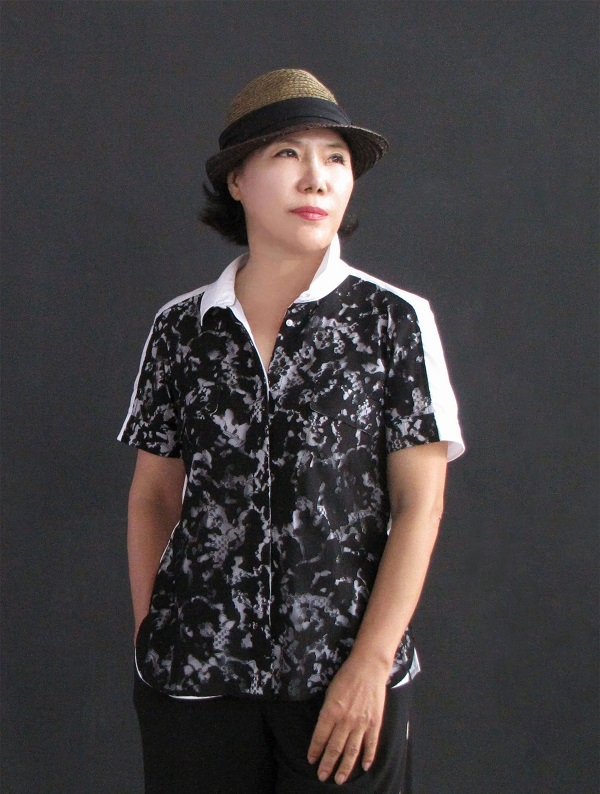[권동철의 화가탐방]A simple and clear graver ‘mark’ unique to woodcut[Thoughts on the woodcut of Jo Hyang Sook,Yim Young Kil Art Critic②,화가 조향숙,조향숙 작가,Yim Young Kil Art Critic②]
도판02.1∼02.3. 정관자득(靜觀自得), 50×60㎝(each), wood cut, 2009. 사진제공=임영길.
A simple and clear graver ‘mark’ unique to woodcut
It is known that Korean contemporary printmaking began around 1950. In Korea, since the printing technology was developed from an early era, it was able to smoothly accept the contemporary printmaking that has been cut off since the modern printmaking. Korean contemporary printmaking developed in several branches, such as the one that was adopted by artists such as Choi Young-rim, who studied Japanese creative printmaking in the early days, and in the later period, the one that had autogenous modernist artists co-working together with the artists who studied in the West. Those who also carried out paintings tended to perceive printmaking as a mean of an expressive technique, rather than a multiple original. In the late 1970s, there were ‘Woodcut of Korean people’, influenced by ‘new woodcut movement in China’, which tried to communicate with the public by actively utilizing the expressive characteristics and plurality of woodcut. In addition to this, assumption of another branch will further enrich the introduction process of Korean contemporary printmaking.
Jo Hyang Sook learned printmaking from Choi Young-rim in college, but learned woodcut from Seok Do-ryun privately. Seok Do-ryun, who taught woodcut to Jo Hyang Sook, can be thought as another pioneer of Korean contemporary printmaking. Seok Do-ryun, who is at the point of transition where modern printmaking was shifting to contemporary printmaking, returned to Korea after studying in Japan to produce seal engraving and woodcut. However, he was reluctant to leave his prints to the future generations, so there remains only a few of his woodcut prints left. His woodcut prints clearly show the simplicity and sharpness of the form due to a single stroke of the graver.
In contrast to Choi Young-rim, whose woodcut prints carry local lyricism, his prints appear as the restrained force of a knife that is similar to a straw cutter. This image created by the simple and rigid cuts leads to the early works of Kim Sang-gu, Oh Yoon, and to that of Choi Jong-tae, who also was a sculptor. These characteristics of Seok Do-ryun's woodcut directly affects Jo Hyang Sook, which is well illustrated in her mid-term works. Cho's mid-term works, the series of <Jeong Gwan Ja deuk> (2011), creates calmness and solemn "reminiscent image" from the appreance of a rising rock as if it's floating from underwater.(Jo Hyang Sook, fig. 02.1∼02.3.)
 |
도판03 석가십대제자상, 140×500㎝ 널목판화, 2001. 사진제공=임영길. |
Silence hidden under the surface of the water calms the source of a wounded heart hurt from the graver. This sensitivity takes the form of a solid printmaking by having the surface of the plate bounded by a simple and clear graver “mark” unique to woodcut’ meeting with the taut surface of sized Hanji. This conveys the familiarity of woodcut prints' physical sensibility, as well as the "stinging" tension as if it were being poked by the angles carved with sharp tip of the graver. This trend also appears in her recent woodcut.(Jo Hyang Sook, fig. 03)
However, since the artist's view of life and emotions have changed as well as the conditions of the time, the exhibition shows a more mature form through the introduction and harmonious arrangement of everyday materials from her memory based on formal experiments in contemporary printmaking.
▲글·도판제공=임영길 홍익대학교 미술대학 판화과 교수, 2020.12.
Writing and fig=Yim Young Kil, professor of printmaking College of Fine Arts Hongik University, 2020.12.
▲[한글평론 원제목]우리 전통의 정신과 형식에서 지속된 “잃어버린 시간을 찾아서-행복한 기억들”연작–조향숙의 목판화에 대한 단상(斷想)들-
[English criticism title]The Series “To Find Lost Time-Happy memories”, Continued in the Spirit and the Form of Korean Tradition–Thoughts on the woodcut of Jo Hyang Sook-
▲자료출처= Jo Hyang Sook, To Find Lost Time-Happy memories(잃어버린 시간을 찾아서-행복한 기억), 2020. 12.2~7. 선 아트센터(SUN ART CENTER)개인전 도록에 수록.




댓글
댓글 쓰기